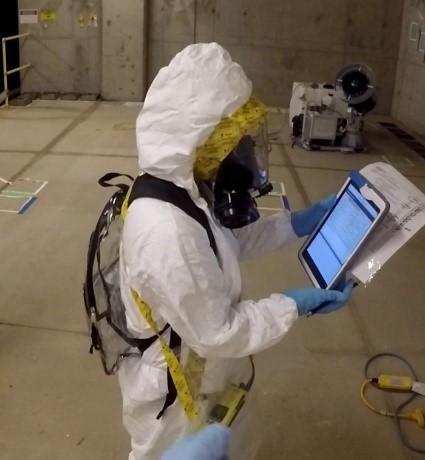Data Management
All phases of the response to a wide-area contamination incident, will result in a substantial amount of data being collected, checked for quality, and maintained to be used in decision-making. Depending on the size and scope of the contamination, data management could require an effort lasting for many years. Examples of data that might be collected include:
- location of sample collection
- sample type (e.g. air, soil, wipe)
- technique or equipment used to take the sample
- identification of personnel that collected the sample
 Data collection using a tablet
Data collection using a tablet - sample preservation method
- laboratory results from the analysis of sample
- documentation of quality checks conducted throughout sampling and analysis
Data management frameworks are plans that address every part of the data management process including tools and technologies used to collect, store, retrieve, and visualize data. Tools and technologies that might be used during data management efforts include:
- computers or tablets
- software applications
- mobile devices
- databases
- data models
- laboratory reporting tools.
A complete understanding of how these data and data management tools work together and a process for evaluating new technologies and tools are critical to the success of EPA’s data management efforts. As such, HSRP conducts research on how to efficiently acquire data connect the various data streams and how to best interpret and visualize data to support of data-driven decision making.
